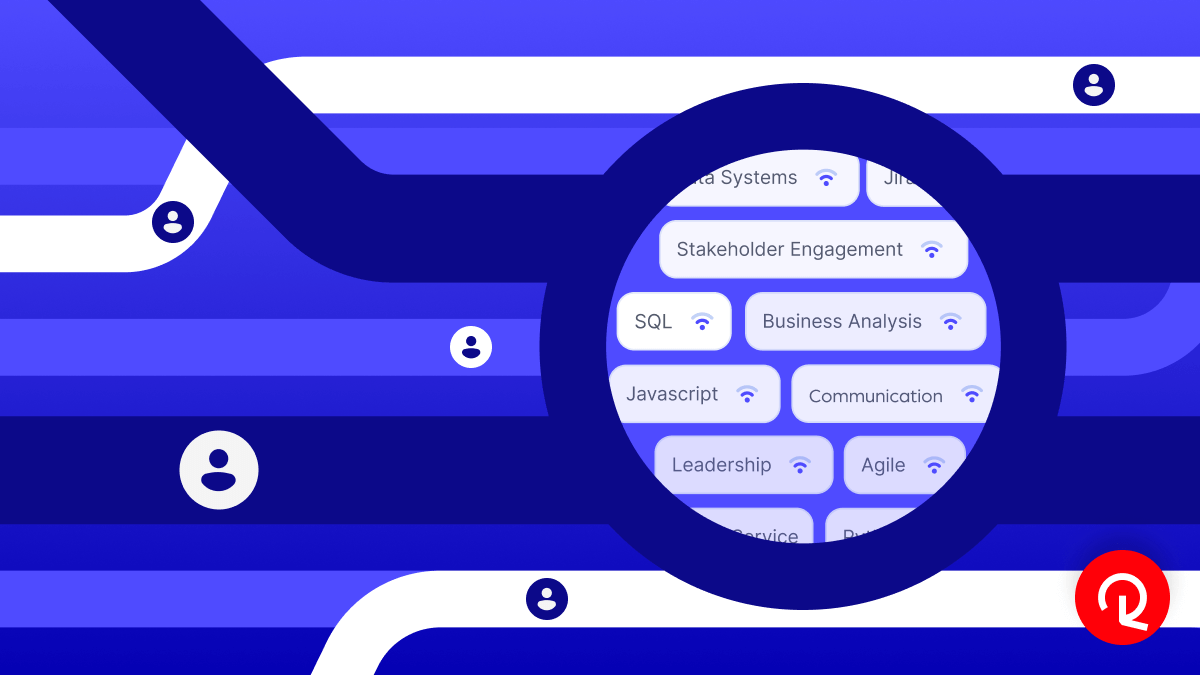The advantage of taking a skills-based lens to sourcing talent
Jonathan Reyes
4 mins
Jun 21, 2022

The advantage of taking a skills-based lens to sourcing talent
Blog Post Body
Table of Contents
Talk to a Work Strategist
See the Work Operating System in action and start re-engineering work for AI.
Subscribe to our newsletter
The latest insights on re-engineering work for AI
To talent professionals everywhere, I want us to start thinking about segmentation and just how important it has become to the way we do our work.
For years, I was a huge advocate for segmenting talent. Market, geographics, job family, internal, external, passive, or active talent. And I still believe that this is a powerful way to build impactful and deliberate talent strategies that help businesses achieve their goals.
But like the rest of our industry, I also believe evolution is happening right now and has been slowly simmering for a while and we’re on the verge of this becoming a common language.
That evolution, that common language is a skills-based one — a new primary lens by which to view our talent and build talent strategies.
The impact of using a skills-based lens to source talent
In particular, this lens seems to have a huge impact on the understanding of what talent we have internally vs what we need externally. By focusing on skills we are better able to understand the talent already available and the gaps that exist today, tomorrow, and in the future.
This ability to predict future gaps and needs evolves HR into a true innovation and value partner to organizations.
It’s true that this skills-based evolution is going to challenge our current norms, HR structures, and practices. Think about it — our HR teams are almost always focused on one segment of the equation and we’ve created structures to support this traditional approach. Segmenting HR roles into sourcers vs recruiters (passive vs active) and HR vs recruitment (internal vs external) validates this approach and its cyclical nature.
“By focusing on skills we are better able to understand the talent already available and the gaps that exist today, tomorrow, and in the future.”
Freeing people and skills data to bring HR strategies together
The freeing of our people data via workforce intelligence platforms will help us validate and predict skills for individuals telling us not only what they have achieved, and how they are growing now, but also what they’ll be able to do in the future.
Bringing this one centralized view together with the macro work we do in HR — workforce organization, talent strategy, and business intelligence — will allow us to operate into the future proactively and strategically, versus a more reactive or retrospective approach.
THE IMPACT
How workforce intelligence platforms create a skills-based lens to sourcing talent
The reason technology, like Reejig, evolves HR teams is because it shifts us away from segmenting talent into siloed views and into this “talent is talent” lens, where your talent ecosystem is no longer split into just internal and external candidates
Instead, your ecosystem becomes your internal teams, external talent, your alumni, your contingent workers, gig workers, fractional workers, and every previous applicant.
That expansion of the talent ecosystem is only possible because we’re able to look at skills and the gaps we have now, and those we may develop in the future, enabling talent professionals to strategically hire the skills needed for their workforce.
The perception is that these kinds of transitions from a traditional talent sourcing approach to a skills-based approach are as simple as making a switch from off to on. But after speaking to many colleagues around the world, it’s clear there are many steps, projects, teams, mistakes, lessons, and efforts that go into making this transition.
But every team and leader who has done so agrees that the first and most important step is to start rethinking how you see your talent and talent sourcing and begin the journey.
Moving towards a skills-based talent approach gives you 3 significant advantages:
1. Visibility of the talent you have in your organization, from skills to growth potential, helping you unearth and communicate development and growth opportunities that are critical to retention and engagement.
2. Better engagement with external talent that comes with seeing the true skills gaps that lie in your workforce. This is a huge differentiation in the market, where you can confidently hire the right talent and know exactly what you need from them and what you can offer. Candidates are in great need of this.
3. The ability to move towards a multi-disciplinary HR solution, one that is encompassing and predictive. This approach will allow HR functions and leaders to become innovators and an engine of business success.
Talk to a Work Strategist
See the Work Operating System in action and start re-engineering work for AI.
Subscribe to our newsletter
The latest insights on re-engineering work for AI